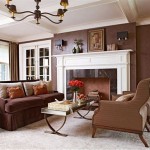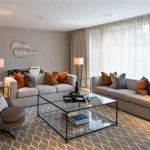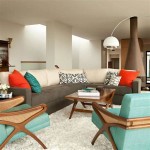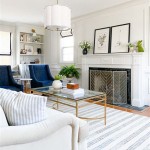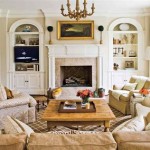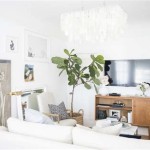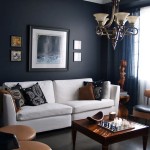Wall Units For Living Room With Fireplace: A Comprehensive Guide
Wall units are an increasingly popular design element in contemporary living rooms, offering a blend of aesthetics and functionality. When integrated with a fireplace, they create a focal point that is both visually appealing and practical. These units can house entertainment systems, display decorative items, and provide valuable storage, all while complementing the warmth and ambiance of a fireplace. This article will explore the various aspects of wall units for living rooms with fireplaces, including design considerations, material choices, installation tips, and potential challenges.
The integration of a wall unit with a fireplace is not merely about placing two separate elements together. It requires careful planning to ensure a cohesive and balanced look. Factors such as the size of the room, the style of the fireplace, and the overall design aesthetic of the home must be considered. The wall unit should enhance the fireplace, not overshadow it, and vice versa. A well-designed wall unit can visually expand the room, create a sense of order, and provide a dedicated space for all the necessary living room essentials.
Key Point 1: Design Considerations for Integrating Wall Units and Fireplaces
The design process begins with defining the purpose of the wall unit. Is it primarily for storage, entertainment, or display? The answer to this question will greatly influence the size, configuration, and features of the unit. If the main purpose is to house an entertainment system, the unit will need to accommodate a television, speakers, gaming consoles, and other electronic devices. Adequate ventilation is crucial to prevent overheating of these components.
Storage needs should also be carefully assessed. Open shelving is ideal for displaying decorative items and books, while closed cabinets are better suited for storing items that need to be hidden away. A mix of both open and closed storage options is often the most practical and visually appealing solution. The depth of the shelves and cabinets should be determined based on the items that will be stored.
The style of the fireplace is a major determinant in the design of the surrounding wall unit. A traditional fireplace with ornate detailing may call for a more formal and elaborate wall unit, while a modern, minimalist fireplace may be better complemented by a sleek and simple design. The materials used in the wall unit should also be compatible with the materials used in the fireplace surround. For example, a stone fireplace might be paired with a wall unit made of natural wood or a material that mimics stone.
Proportion and scale are critical to achieving a balanced and harmonious look. The wall unit should be proportional to the size of the fireplace and the room as a whole. A small wall unit paired with a large fireplace may look insignificant, while a large wall unit in a small room can feel overwhelming. The height of the wall unit should also be considered. A unit that extends all the way to the ceiling can create a sense of grandeur, but it may also make the room feel smaller. A unit that stops short of the ceiling can create a more open and airy feel.
The placement of the television in relation to the fireplace is another important consideration. Ideally, the television should be positioned at eye level when seated, and it should not be placed too close to the fireplace to avoid heat damage. Some designs incorporate the television directly above the fireplace, but this requires careful planning to ensure that the viewing angle is comfortable and that the television is adequately protected from the heat.
Lighting can play a significant role in enhancing the visual appeal of the wall unit and the fireplace. Recessed lighting can be used to highlight specific areas of the wall unit, such as shelves or display niches. Accent lighting can be used to draw attention to the fireplace. Dimmable lighting allows for adjusting the ambiance of the room depending on the mood and activity.
Key Point 2: Material Choices and Construction Techniques
The choice of materials for the wall unit is crucial in determining its durability, appearance, and cost. Solid wood is a popular choice for its natural beauty and longevity. However, it can be expensive and requires proper maintenance to prevent warping and cracking. Hardwoods such as oak, maple, and cherry are durable and offer a rich, warm appearance.
Plywood is another common material used in the construction of wall units. It is more affordable than solid wood and is less prone to warping. High-quality plywood can be just as durable as solid wood and can be finished to look similar. Medium-density fiberboard (MDF) is also a popular choice for its smooth surface and affordability. It is easy to paint and can be used to create intricate designs. However, MDF is not as durable as solid wood or plywood and is more susceptible to water damage.
Veneers are thin layers of wood that are applied to a substrate such as plywood or MDF. Veneers offer the look of solid wood at a lower cost. They can be made from a variety of wood species and can be finished to match the surrounding décor. Laminates are synthetic materials that are applied to a substrate to provide a durable and easy-to-clean surface. Laminates come in a wide range of colors and patterns and can mimic the look of wood, stone, or other materials.
Metal accents can add a touch of modern elegance to the wall unit. Stainless steel, brushed nickel, and wrought iron are popular choices. Glass shelves or doors can also be used to create a sleek and contemporary look. The construction techniques used to build the wall unit are also important. Dovetail joints are strong and durable and are often used in high-quality furniture. Dado joints are another common type of joint that provides a strong and stable connection. Screw and glue construction is a more affordable option, but it may not be as durable as other methods.
When selecting materials, it's crucial to consider the proximity to the fireplace. Materials should be inherently fire-resistant or treated with fire retardants. This is especially important for materials directly surrounding the fireplace opening. Always consult with a professional regarding local building codes and safety regulations related to fireplace clearances and material requirements.
The finish applied to the wall unit can also affect its appearance and durability. Paint is a versatile option that can be used to create a wide range of colors and finishes. Stain is a good choice for highlighting the natural grain of the wood. Varnish provides a protective layer that helps to prevent scratches and water damage. The finish should be chosen based on the desired look and the level of protection required.
Key Point 3: Installation Tips and Potential Challenges
Installing a wall unit with a fireplace requires careful planning and execution. It is important to start by taking accurate measurements of the wall and the fireplace. The measurements should be used to create a detailed plan of the wall unit, including the size and placement of all the components. The plan should also include the locations of electrical outlets and other utilities.
If the wall unit is being custom-built, it is important to work with a reputable cabinet maker or contractor. The contractor should have experience in building and installing wall units and should be able to provide references. Before starting the installation, it is important to prepare the wall by removing any obstacles such as baseboards, trim, or electrical outlets. The wall should also be cleaned and leveled to ensure that the wall unit is installed properly.
The installation process typically involves attaching the wall unit to the wall using screws or bolts. The screws or bolts should be anchored into studs or other structural supports to ensure that the wall unit is securely attached. It is important to use the correct type of fasteners for the wall material. For example, drywall anchors should be used for drywall walls, and masonry anchors should be used for brick or concrete walls.
One of the potential challenges of installing a wall unit with a fireplace is dealing with existing electrical wiring or plumbing. It is important to identify the location of any electrical wires or plumbing pipes before starting the installation. If necessary, a qualified electrician or plumber should be hired to relocate the wires or pipes.
Another potential challenge is ensuring that the wall unit is properly ventilated. Electronic devices such as televisions and gaming consoles can generate a significant amount of heat. If the wall unit is not properly ventilated, the heat can build up and damage the devices. Ventilation can be provided by leaving open spaces around the devices or by installing vents in the wall unit.
Leveling the wall unit is crucial to ensure that it looks professional and functions properly. A level should be used to check the alignment of the wall unit during the installation. Shims can be used to adjust the level of the wall unit if necessary. After the wall unit is installed, it is important to inspect it carefully to ensure that all the components are properly aligned and secured. Any imperfections should be corrected before the installation is considered complete.
Integrating a fireplace and wall unit can sometimes present challenges related to building codes and safety regulations. Clearances around the fireplace must be maintained to prevent fire hazards. The materials used in the wall unit construction may need to meet specific fire-resistance standards. It is always advisable to consult with a local building inspector or fire marshal to ensure that the installation complies with all applicable regulations.
Finally, consider the long-term maintenance of the wall unit. Dust and dirt can accumulate over time, so regular cleaning is essential. Use appropriate cleaning products based on the materials used in the construction of the unit. Inspect the unit periodically for any signs of wear and tear, such as loose screws, damaged finishes, or warping. Promptly address any issues to prevent further damage and extend the lifespan of the wall unit.

Tv Units With Built In Fires Solutions

What Makes A Great Custom Wall Unit Stylish Fireplaces

Chic Hanging Wall Unit With Bioethanol Fireplace Sena Furniture

Tv Units With Built In Fires Solutions

Add A Touch Of Home And Warmth To Your Living Room With Modern Wall Units Fireplace Italian Design Furniture Store From Italy Coch Italia Leather Sofas Il Piccolo

Custom Built In Entertainment Furniture And Cabinets With Electric Fireplaces

Built In Shelves Around Tv Shelving Over Fireplace

Custom Transitional Wall Unit Furniture Design Gallery

Add A Touch Of Home And Warmth To Your Living Room With Modern Wall Units Fireplace Italian Design Furniture Store From Italy Coch Italia Leather Sofas Il Piccolo

Starmore 3 Piece Wall Unit With Electric Fireplace W633w6 Si Inspireliving

